The History of USB Standards from USB 1.0 to USB 4.0
In today's connected world, the Universal Serial Bus (USB) is a common technology that makes it easy to connect devices like keyboards, mice, and phones to computers. Since it was first introduced in the mid-1990s, USB technology has greatly changed how we transfer data, charge devices, and communicate with each other. This article explores the history of USB technology, from its start with USB 1.0 to the latest USB4. By learning about how USB has developed over the years, we can better understand how these changes have improved our everyday use of technology.
Catalog
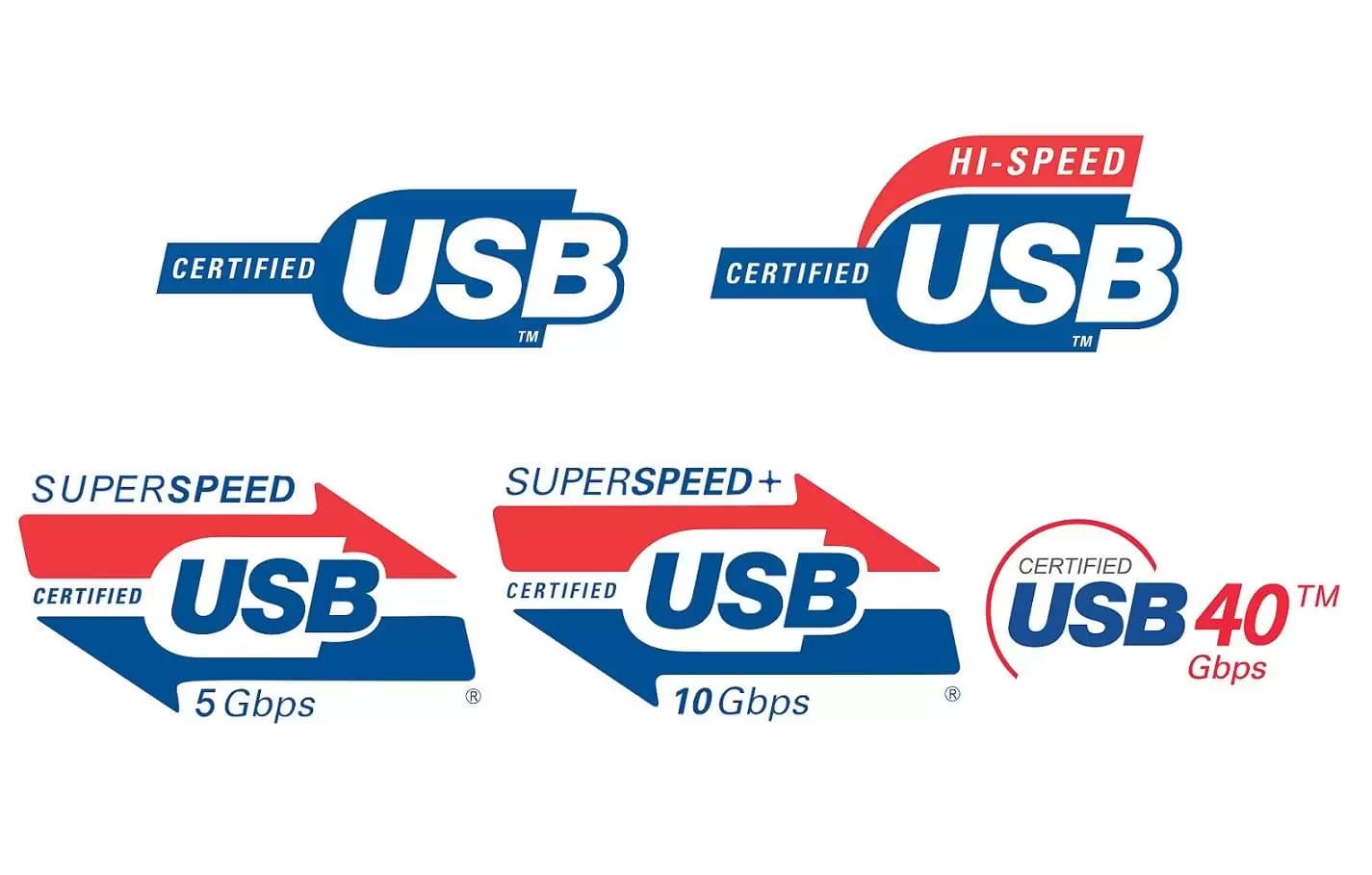
Figure 1: USB Standard Logos from USB 1.0 to USB4
Early Connections Before USB
Before USB, computers used serial and parallel ports to connect external devices. These ports had different plugs and connectors, which made the process of linking devices to computers both slow and complicated. Serial ports transferred data one bit at a time and were commonly used for devices like mice and modems. Parallel ports, on the other hand, sent multiple bits at once and were mainly used for printers and scanners.
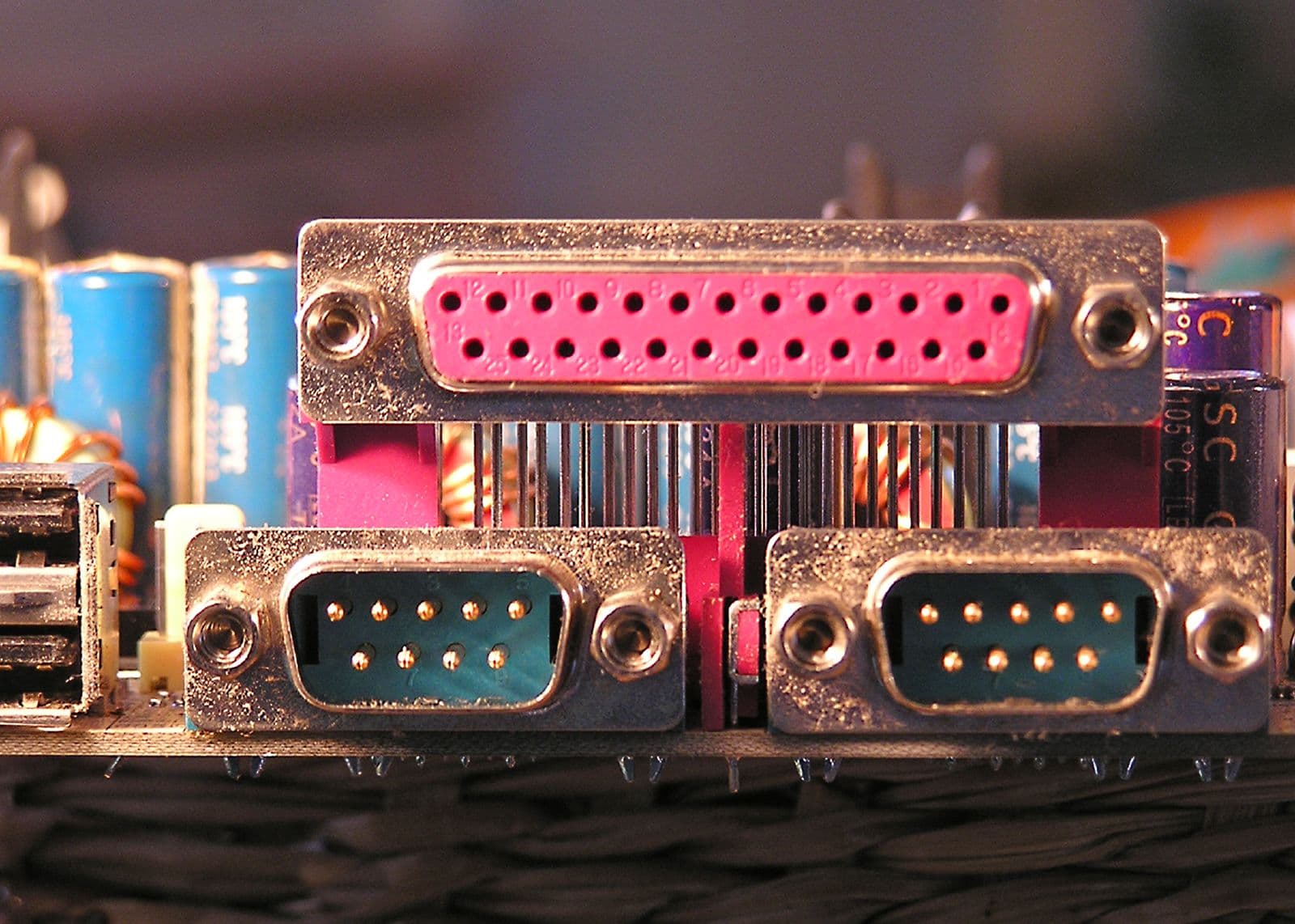
Figure 2: Early Connections Before USB
One of the big issues with these older ports was the lack of a universal standard. Each device often needed its own unique connector, leading to a mess of cables and adapters. This not only created clutter but also made it hard for users to set up and use their devices. Moreover, connecting a new device usually meant turning off the computer, attaching the device, and then restarting the system. This process was time-consuming and inconvenient.
Data transfer speeds were also a big problem. Serial ports, while good for simple tasks like transferring text, struggled with larger files or more complex data. Parallel ports offered better speeds but were still slow compared to what USB would eventually provide. Additionally, these older ports couldn't deliver power to connected devices, meaning that many gadgets needed their own separate power sources.
Development and Evolution of USB
USB 1.0 (1996)

Figure 3: USB 1.0 Cable
Introduced in 1996, USB 1.0 made it much easier to connect devices to computers. It offered two data transfer speeds: 1.5 Mbps (low speed) and 12 Mbps (full speed), which were much faster than the older serial and parallel ports.
USB 1.0 could set up devices by itself, so users didn't need to manually install drivers. It was also hot-swappable, meaning users could plug in or unplug devices without restarting the computer.
The standardization of connectors and cables made it easier to manage multiple devices. This made USB 1.0 a more efficient and user-friendly solution. The ease of use led to the widespread adoption and ongoing improvement of USB technology.
USB 1.1 (1998)
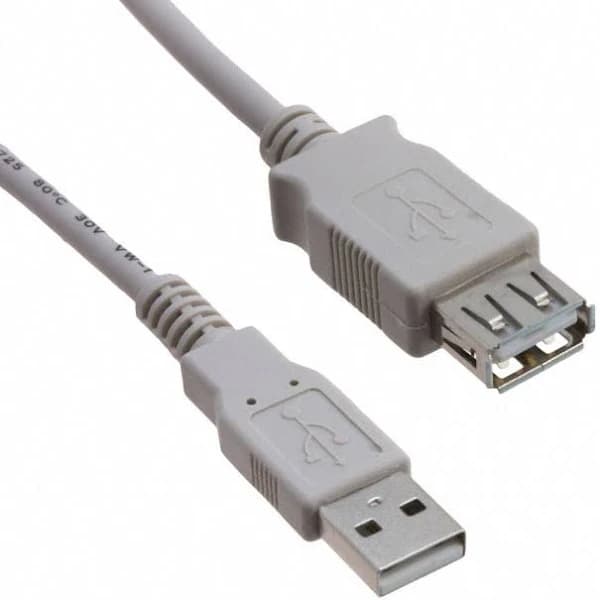
Figure 4: USB 1.1
USB 1.1, introduced in 1998, kept the same data transfer speeds as USB 1.0, offering 1.5 Mbps for low-speed and 12 Mbps for full-speed connections. However, USB 1.1 became more useful because it could support a wider range of devices, especially those needing slower data transfer rates. This change made the technology more flexible and usable with different kinds of hardware.
One big moment for USB 1.1 was when Apple used it in the iMac G3. By including USB 1.1 in this popular computer, Apple helped make USB technology well-known and widely used. This move by Apple showed people the benefits of USB, like making it easier to connect devices to their computers.
USB 1.1's improvements over USB 1.0 were not just about speed and compatibility. It also made it easier and more reliable to connect and disconnect devices. USB 1.1 could work with USB 1.0 devices, so people upgrading their systems or adding new devices had a smooth experience.
From a technical point of view, USB 1.1 improved the way signals were sent and received, and how power was distributed to devices. These improvements fixed some problems in USB 1.0, like signal quality and power supply issues, leading to more stable and consistent connections.
USB 2.0 (2000)

Figure 5: USB 2.0 Cable
USB 2.0, released in 2000, was a big improvement in USB technology. It increased data transfer speeds to a maximum of 480 Mbps, making it much faster to transfer large files. This higher speed was called High Speed. Another feature introduced with USB 2.0 was USB On-the-Go (OTG), which allowed devices to connect and communicate directly with each other without needing a computer. This feature was especially useful for mobile devices, as it allowed phones to exchange data or cameras to print directly.
USB 2.0 also brought new, smaller connectors, including Mini and Micro connectors. These smaller connectors made USB technology more adaptable and convenient for use in compact devices like mobile phones, digital cameras, and other portable electronics. The improvements provided by USB 2.0 greatly enhanced the versatility and performance of USB connections, making it more useful for a wide range of electronic devices.
Wireless USB (2005)
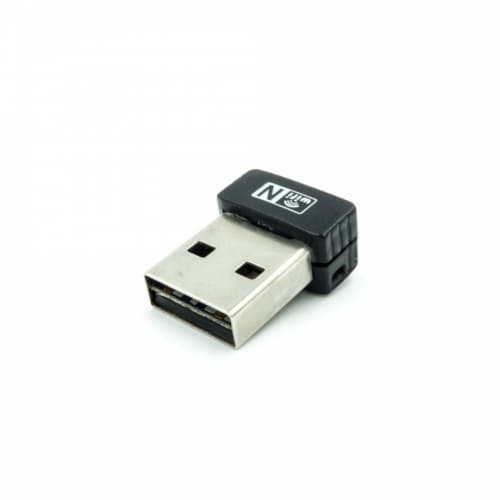
Figure 6: Wireless USB Adapter
Wireless USB, introduced in 2005, was designed to make data transfer easier by eliminating the need for cables. It offered speeds up to 480 Mbps within a range of 10 meters, allowing devices to connect without wires for more convenience and flexibility. Despite its promising capabilities, Wireless USB did not become widely used and is no longer in use.
One reason for its limited success was the competition from other wireless technologies that became popular around the same time. For instance, Bluetooth and Wi-Fi both provided strong wireless solutions and were already popular with users. Bluetooth, known for being easy to pair and using little power, became the favorite for short-range connections between devices like smartphones, headphones, and keyboards. Wi-Fi, with its longer range and higher data transfer rates, was the go-to for connecting to networks and the internet.
Wireless USB also faced technical and market challenges. The first versions needed adapters and dongles, which added cost and complexity for users. This hardware requirement was less attractive compared to Bluetooth and Wi-Fi, which were built into most devices. As technology advanced, the growing use of these built-in wireless solutions made Wireless USB less useful.
USB Micro (2007)
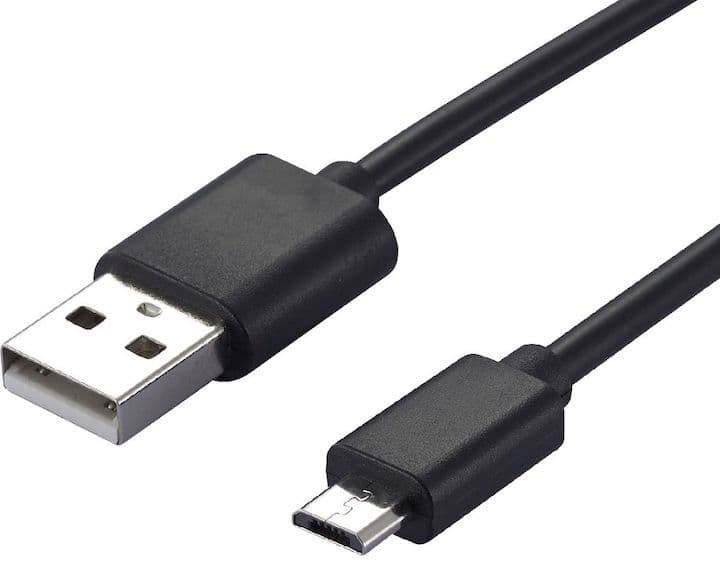
Figure 7: USB Micro
USB Micro, introduced in 2007, featured smaller connectors designed for faster charging and data transfer. It quickly became the standard for mobile devices, such as smartphones and tablets, due to its compact size and better performance. USB Micro made it easier to charge devices and transfer data efficiently.
The smaller size of USB Micro was especially helpful for mobile devices, which require connectors that do not take up much space. This allowed manufacturers to design sleeker and more compact gadgets. Additionally, USB Micro offered better charging speeds and faster data transfers compared to its predecessors, making everyday tasks more convenient for users.
Its widespread adoption meant that users could enjoy a more uniform and reliable experience across different devices. Whether charging a phone or transferring photos from a tablet to a computer, USB Micro made these tasks straightforward and quick. This standardization also reduced the need for multiple types of cables, simplifying the user experience.
USB 3.0 (2008)
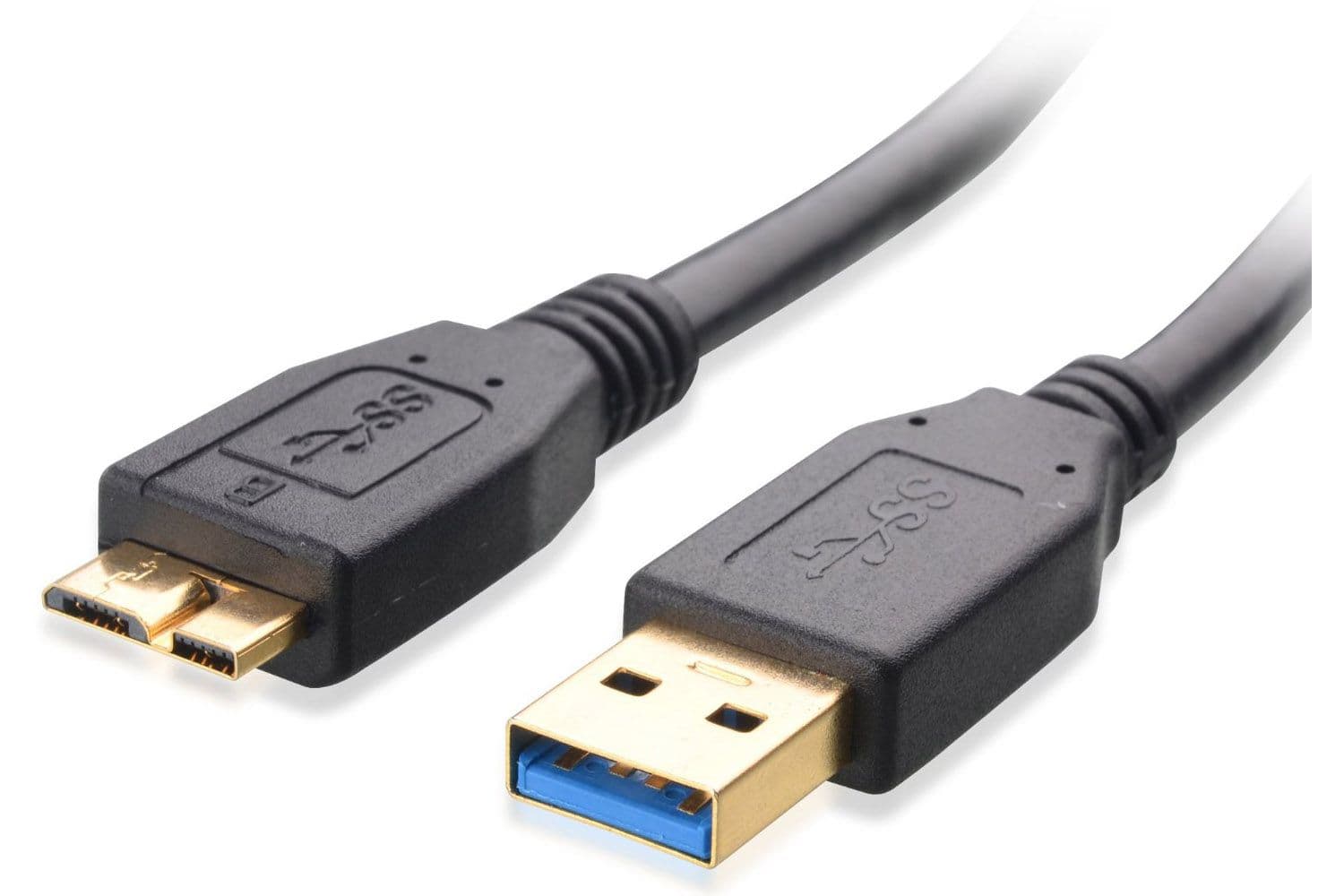
Figure 8: USB 3.0
USB 3.0, introduced in 2008, brought a major boost to data transfer speeds, reaching up to 5 Gbps. It was branded as SuperSpeed USB. This version included more connection lines, allowing data to be sent and received at the same time. Today, it is known as USB 3.2 Gen 1. USB 3.0's improvements in performance and efficiency made it a popular choice for faster and more reliable connections.
The big increase in speed meant that large files, like high-definition videos or large batches of photos, could be transferred much more quickly compared to older versions. This made USB 3.0 especially useful for external hard drives, flash drives, and other storage devices.
The ability to send and receive data at the same time allowed for smoother and more efficient communication between devices. For example, when backing up data from a computer to an external drive, the process could happen without the slowdowns that were common with older USB versions.
USB 3.0 also had better power management, which helped devices charge more quickly and efficiently. This was good for a wide range of gadgets, from smartphones to larger devices like printers and scanners.
USB 3.1 (2013)
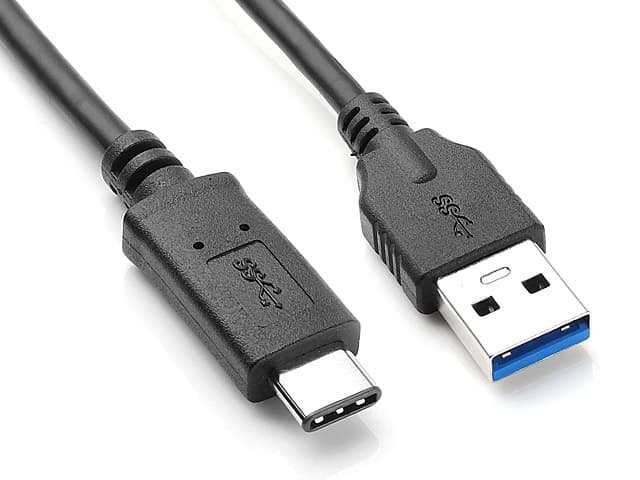
Figure 9: USB 3.1
USB 3.1, introduced in 2013, doubled data transfer speeds to 10 Gbps and was called SuperSpeed+. It also introduced the USB Type-C connector, which can be plugged in either way, making it much easier to use. Today, USB 3.1 is known as USB 3.2 Gen 2, providing faster data transfer and better usability with its new connector design.
The speed increase to 10 Gbps meant that large files, like 4K videos or big software applications, could be transferred very quickly. This was a big advantage for anyone needing to move a lot of data in a short amount of time.
The introduction of the USB Type-C connector was a big change. Unlike earlier connectors, which had to be plugged in a certain way, the Type-C connector is reversible. This means users no longer have to worry about which way the plug is facing, reducing frustration and making connections quicker and easier.
USB 3.1's faster speeds and the new Type-C connector design made it a major improvement over previous versions. It allowed for more efficient data transfer and made connecting devices simpler and more user-friendly.
USB 3.2 (2017)

Figure 10: USB 3.2
USB 3.2, introduced in 2017, increased data transfer speeds to up to 20 Gbps when using USB Type-C connectors. This version offered even faster data transfer, making it perfect for tasks that need high-speed connections and large file transfers. USB 3.2 further improved the efficiency and performance of USB technology.
The increase to 20 Gbps meant that very large files, such as high-definition videos and big software applications, could be transferred extremely quickly. This was very helpful for users who often move large amounts of data and need it done in a short time.
Using USB Type-C connectors with USB 3.2 made the connection process easier and faster. The Type-C connector is reversible, so it can be plugged in either way, reducing the hassle of figuring out which side is up. This user-friendly design, combined with the higher speeds, made USB 3.2 a strong choice for modern devices.
USB 4.0 (2019)
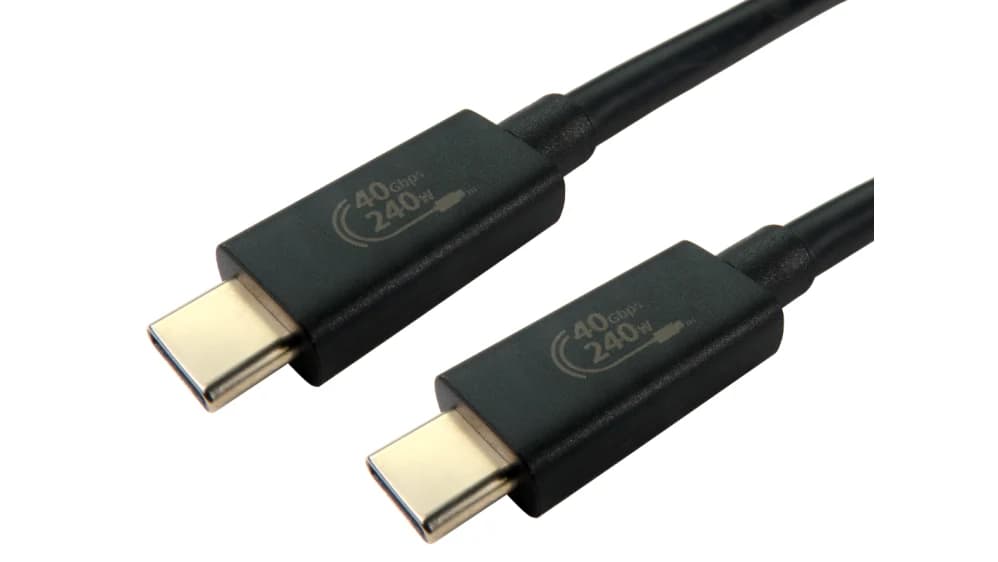
Figure 11: USB 4.0
USB 4.0, introduced in 2019, offered data transfer speeds of up to 40 Gbps. It was based on the Thunderbolt 3 protocol and used existing USB Type-C connectors. USB 4.0 also supported up to 240W power delivery, allowing for faster charging and the ability to power larger devices. This version brought big improvements in speed, power, and compatibility, enhancing the overall performance and flexibility of USB technology.
The increase to 40 Gbps meant that very large files, such as 4K and 8K videos or huge software applications, could be transferred extremely quickly. This was a major benefit for users who work with large data files and need them to move swiftly.
The support for up to 240W power delivery meant that devices could charge faster and more powerful devices could be powered through USB. This made USB 4.0 a great option for a wider range of devices, including laptops and other high-power gadgets.
Using the existing USB Type-C connectors made the transition to USB 4.0 smooth, as users didn't need new cables or adapters. The reversible design of the Type-C connector also continued to make connecting devices easy and hassle-free.
USB Connectors
Different USB standards have led to various connector types:
• USB Type A: Flat and rectangular, this connector has been used since the first USB standard. It is commonly found on computers and other host devices.
• USB Type B: Square with beveled corners, this connector is typically used for printers and larger devices.
• USB Mini-B: Smaller than Type A and Type B, this connector was used in older cell phones and cameras.
• USB Micro-B: Even smaller and flatter, this connector is used in many smartphones and portable devices.
• USB Type C: Reversible and oval-shaped, this connector supports higher data and power transfer rates, making it suitable for a wide range of modern devices.
Understanding USB Naming Standards
USB standards have changed names several times to make them easier to understand. These changes show improvements in speed and how they work with each new version. For example, the original USB 3.0, which had data transfer speeds of up to 5 Gbps, is now called USB 3.2 Gen 1. This renaming helps users see the progress of the technology without getting confused by different names for similar features.
The next version, first called USB 3.1, offered faster data transfer speeds of up to 10 Gbps. It is now known as USB 3.2 Gen 2. This update doubled the speed of the earlier version, making it much better for transferring larger files and handling more data-heavy tasks.
Further improvements led to what was originally named USB 3.2, which introduced a new mode called USB 3.2 Gen 2x2. This version us es two lanes of 10 Gbps each, doubling the data transfer rate to 20 Gbps. This big boost allows for even faster and more efficient data transfer, meeting the growing need for high-speed connections.
These naming changes are designed to make it easier for users to understand what each USB version can do. By providing a clear path in names and performance, users can more easily choose the right USB standard for their needs. The changes also reflect ongoing advancements in technology, ensuring that USB standards stay useful and capable of handling modern data transfer needs.
Conclusion
The development of USB technology from USB 1.0 to USB4 shows a great story of progress and ease of use. Each new version of USB has brought faster data transfer, better power delivery, and more ways to connect devices. This has changed how we connect and use our gadgets. From the slow and complicated serial and parallel ports of the past to the fast and easy-to-use USB Type-C connectors of today, USB has kept up with our needs for better and quicker technology. Looking ahead, USB will continue to improve and make our digital lives even easier and more connected.
Frequently Asked Questions [FAQ]
1. What is the history of the USB standard?
The USB standard started in 1996 with USB 1.0, making it easier to connect devices to computers. USB 1.1 came out in 1998, fixing some issues. USB 2.0, released in 2000, was much faster. USB 3.0 came in 2008, offering even higher speeds and better power usage. USB 3.1 in 2013 introduced the reversible Type-C connector and faster speeds. USB 3.2, released in 2017, further improved speeds. USB4, launched in 2019, provided the fastest speeds and used the Thunderbolt 3 technology.
2. What is the history of the USB drive?
The USB drive, also known as a flash drive, was invented in 1998 and sold to the public in 2000. It quickly replaced floppy disks and CDs because it was portable and easy to use. Early USB drives had small storage, but this has increased a lot over the years. Today, they are a common way to store and transfer data.
3. What is the evolution of the USB cord?
The first USB cords with USB 1.0 had Type-A and Type-B connectors. USB 2.0 brought smaller Mini and Micro connectors for small devices. USB 3.0 added more lines for faster speeds and better power. USB 3.1 in 2013 introduced the reversible Type-C connector, which is faster and more powerful. USB 3.2 and USB4 continued with the Type-C, making it the standard because it is easy to use and very efficient.
4. When was USB4 released?
USB4 was released in 2019, offering the fastest data transfer speeds and using the Thunderbolt 3 technology.
5. When did USB-C become standard?
USB-C started to become the standard around 2015 with the release of USB 3.1. Its reversible design and better performance made it popular for new devices.